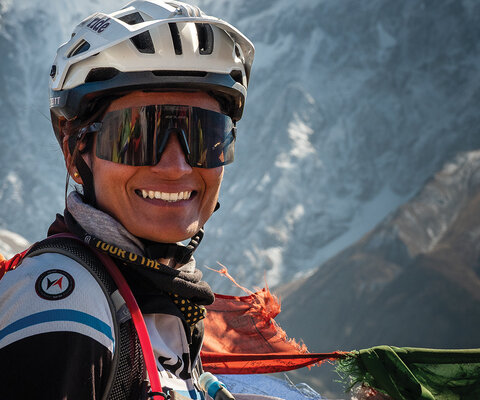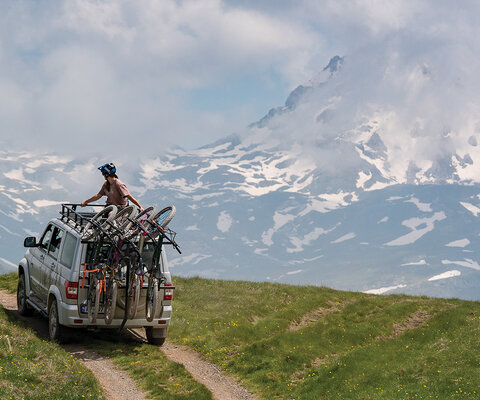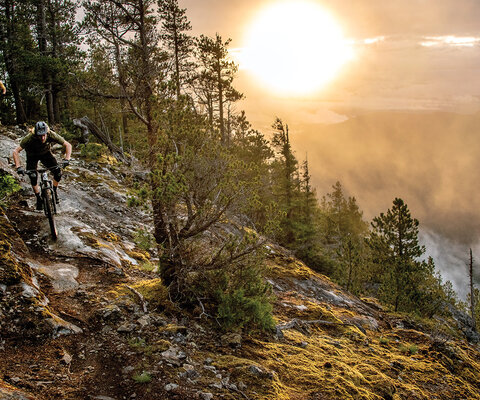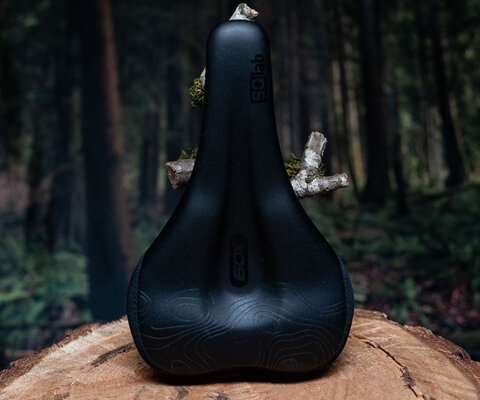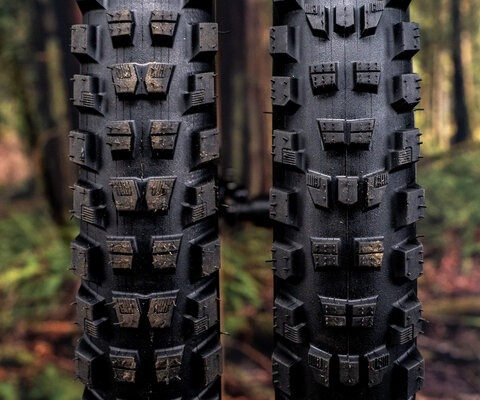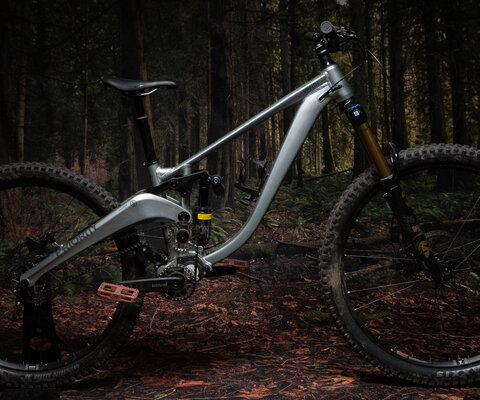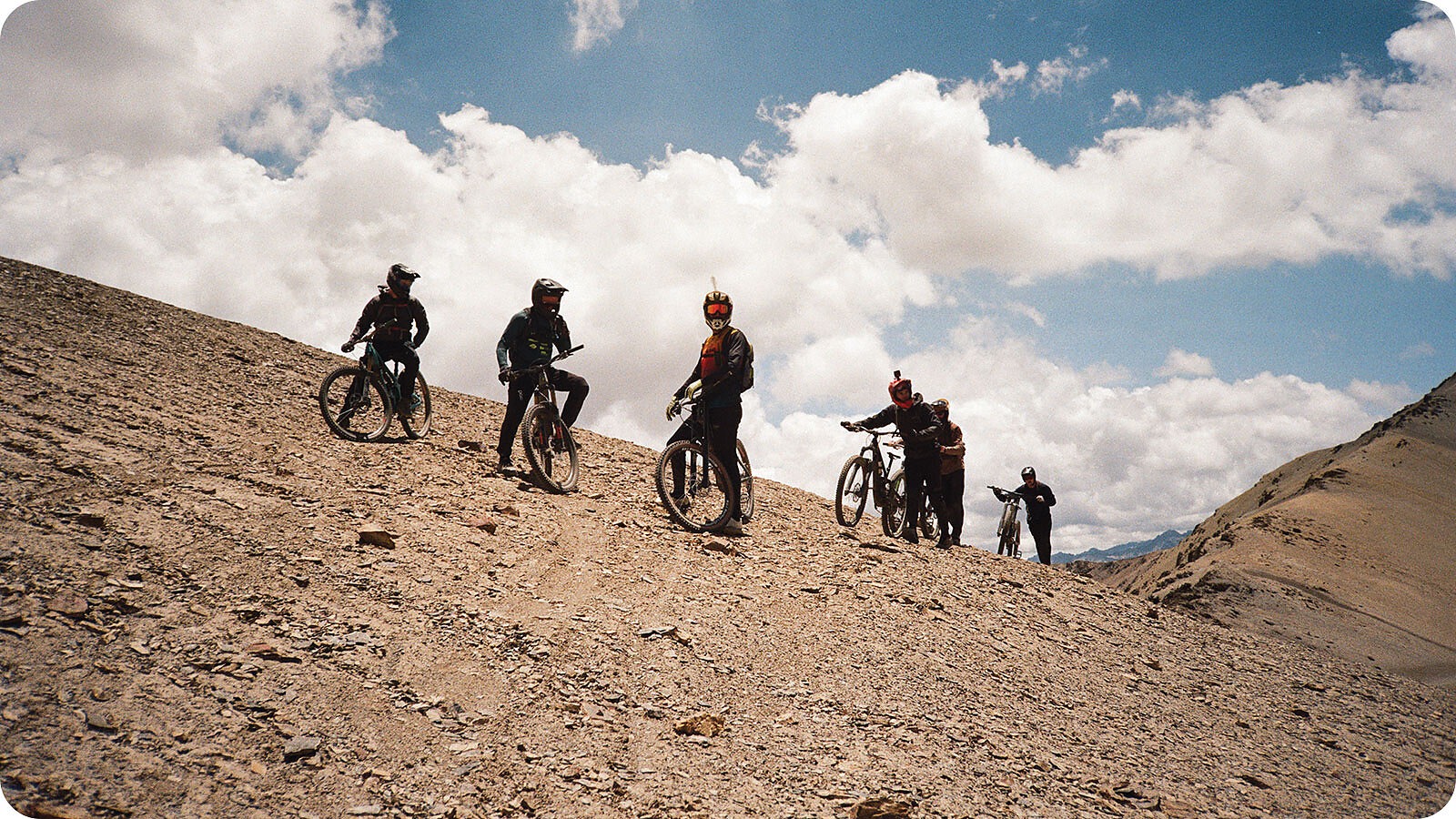
The Scree Teachings Demolishing the Ego and Finding Connection in Bolivia
Words by Myles Trainer
When settlers first came to the Pacific Northwest, they began an initiative for deforestation. The forest held many valuable resources, but it also evoked fear in people, which, in turn, evoked a desire to tame it. Perhaps, as a species, nothing is more ingrained in us than the inherent understanding that nature holds the capacity to both nourish us and rip us down to our very core.
With much deference to this idea, I traveled last February from Bellingham, Washington to Bolivia where, alongside five of my closest riding buddies, we hoped to cruise some of the highest elevation scree runs in the world amongst massive peaks. Though, what came as a greater surprise was just how much emotional weight each day of riding held. For the duration of our time south of the equator, we did whatever it took to burn the singletrack of Bolivia into our brains, even if it did end with a five-night hospital stay for some at the conclusion of the trip.
The group consisted of a Bellingham contingent—Leif Trott, Hannah Bergemann, Quinn Campbell, Matt Russell, myself—and Knight Ide from Vermont, who had been a boss to a few of us and would become a good friend to all. Once assembled, we met our guide, Yannick Wende, and set off on our journey.
After enduring 39 hours of flights and layovers, Knight’s classic wide-eyed grin was still firmly in place as we explored the streets of Bogota, Colombia, on our way to La Paz, Bolivia. Knight has long inspired me; he started a masonry business out of the back of his Saab in high school, towing a concrete mixer with his childhood friend Dylan. Bicycles changed his life, a fact that radiates from his being and that he passes on to others through his dedication to trailbuilding and outdoor advocacy. In the backyard of his home in Vermont, which overflows with perfectly sculpted dirt jumps, I learned about community and the importance of hard work.
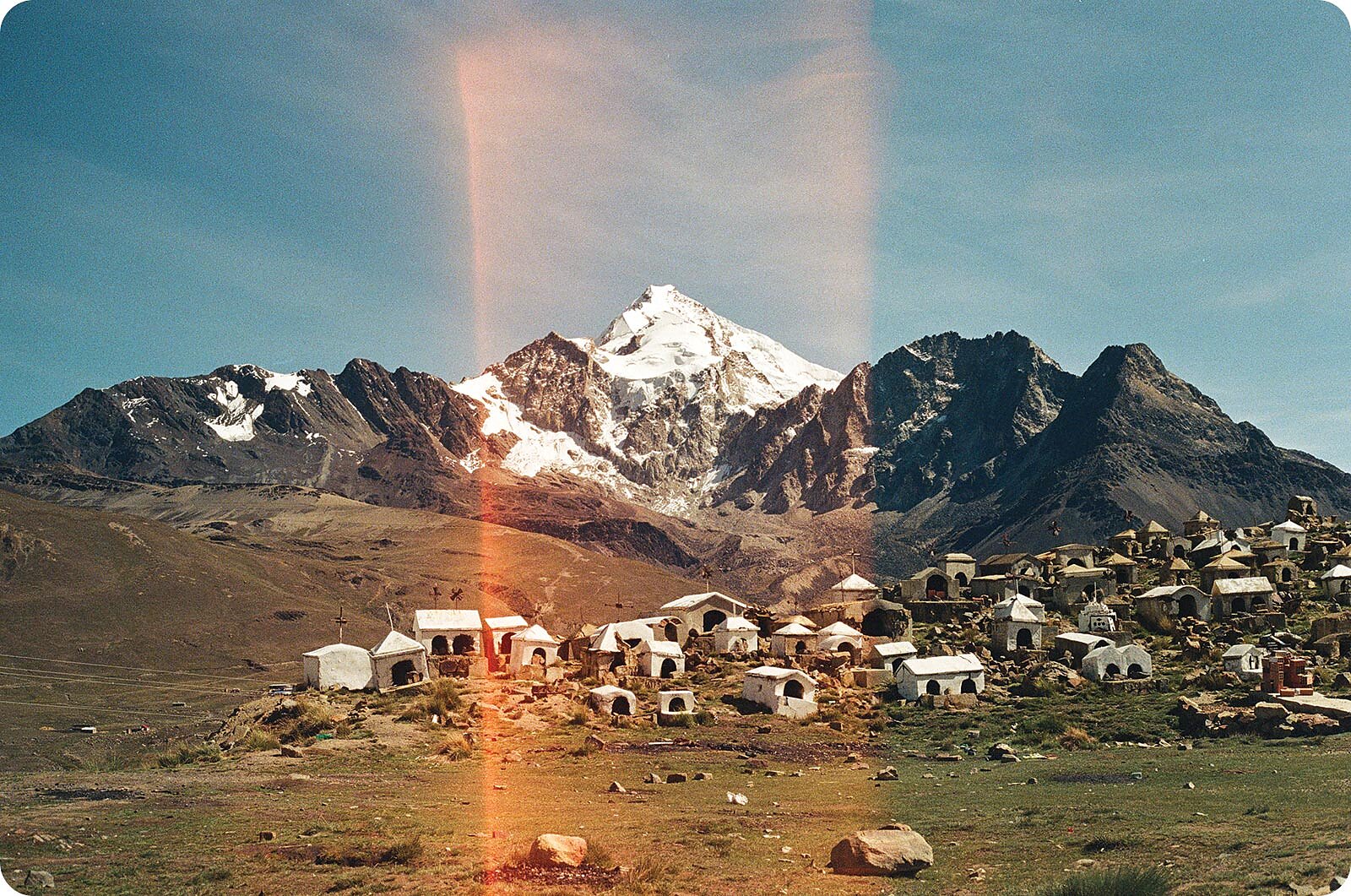
In La Paz, a city of nearly 2 million people that sits at about 12,000 feet, we wandered about on only a few hours of sleep before climbing into two trucks that clawed way up the winding streets. During a quick pitstop, Yannick chatted with a traditionally dressed Cholita, an indigenous Bolivian woman, and bought a bag of coca leaves for later use at the trailhead. Yannick’s aura is that of an excitable teenager trapped in a 35-year-old’s body. His passion for his homeland glowed as he delicately relayed the history of the areas we’d visit and the natural world we played in.
Later, we continued up into the mountains and got our first glimpse of one of Bolivia’s most stunning geographic anomalies: Valle de las Ánimas, an eruption of natural spires that create the impression that the barren hills are blanketed with thousands of gothic church steeples.
The road eventually topped out at the Camiraya Bike Park, where our crew was greeted by Danny Apaza, a trailbuilder and sheepherder. Danny lives with cerebral palsy, which keeps him off the bike, but that hasn’t stopped him from pouring his heart into the local mountain bike community. Riding is in Danny’s blood—it’s evident in the perfectly radiused berms and masterfully routed lines he has built in the bike park, all of which decorate Camiraya’s arid hillsides and share space with grazing livestock.
After exchanging hugs with Danny, Yannick began a ceremony to ignite our trip and set the tone for our spiritual journey. We watched as Yannick bent down and gently poured half of the coca leaves on the mountain’s soft earth. Beckoning us to come closer, we each grabbed three leaves and were told to focus on an intention for the trip. Beyond ourselves, it was also an offering of respect to Pachamama (Mother Earth) for allowing us to recreate on her land. In a sleepy daze, and with our intentions set, we peered out to the vast topography of spires and glaciers towering over the valleys that sliced into the loose scree landscape. Later that night, fatigue settled upon us as we gathered around a dimly lit picnic table.
“We need to change our plans for the next few days,” Yannick said. “These mountains have minds of their own and if there is any chance of [inclement] weather, it will happen, and it will change very quickly.”
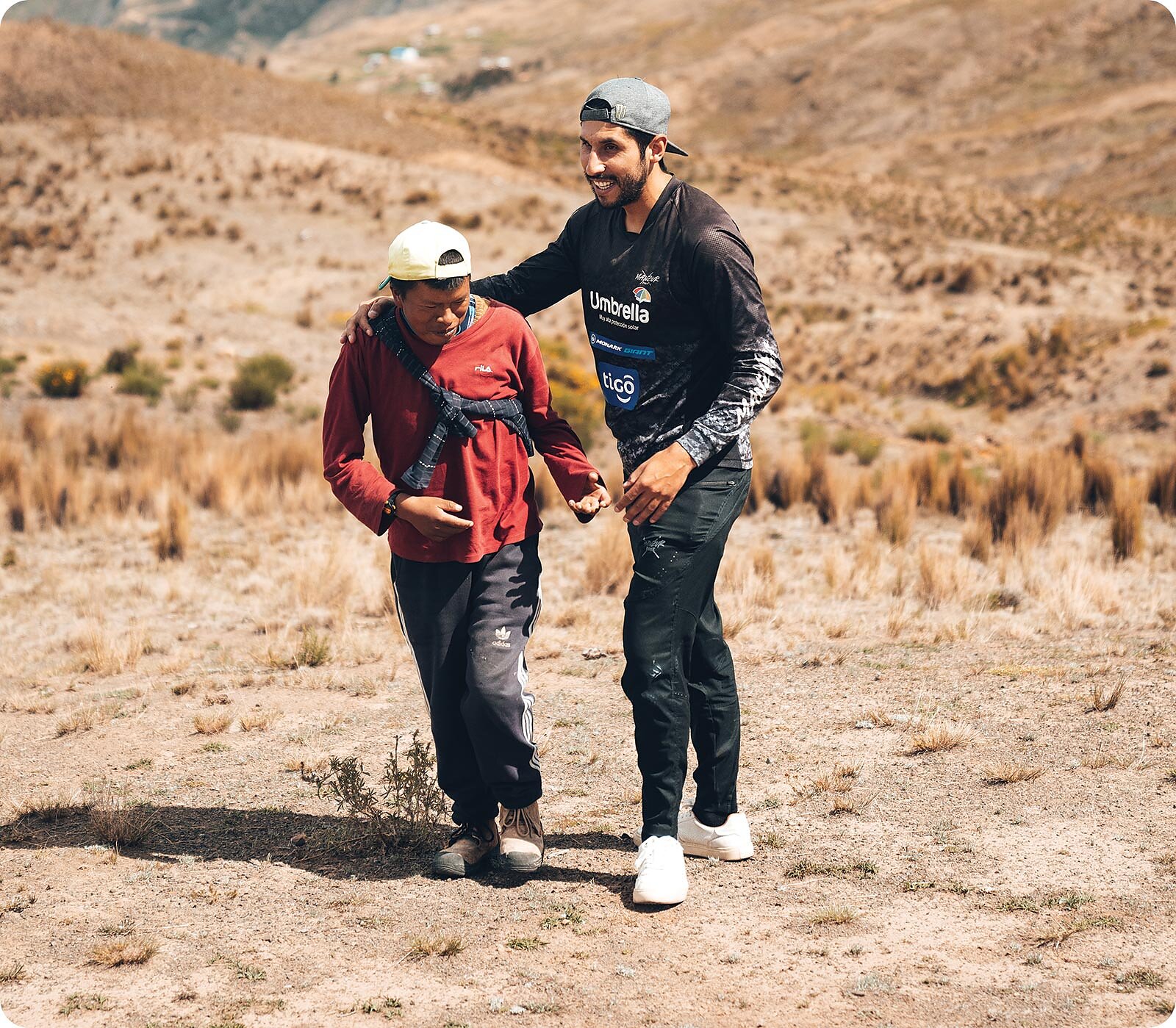
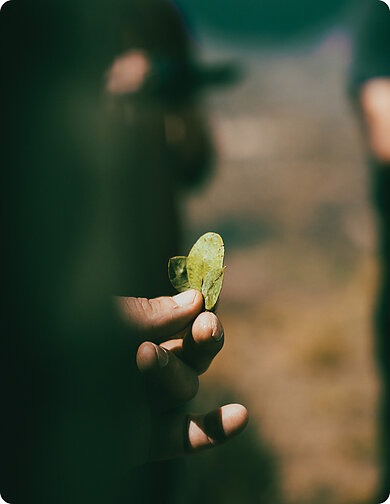
As we absorbed Yannick’s words, we watched the wind delicately pick up our remaining coco leaves from earlier in the day and gracefully spread them across the land. Something was becoming clear—our time in Bolivia was not meant to be guided by rigid itineraries, but rather by the power and ever-changing temperament of this rugged, high-altitude expanse.
Two days later, we pushed and pedaled our bikes along a ridgeline to the top of the 17,000-foot Milluni scree fields on the western slopes of the Cordillera Real mountain range. Wrought with dizziness from the altitude, we laughed like young children emerging from an amusement park ride.
“I can’t stop farting and laughing from this altitude!” Quinn said. His contagious grin lightened the mood whenever daunting hike-a-bikes threatened to flatten our spirits. His optimistic way of turning rough situations into lighthearted giggle fests played a massive role in all of us experiencing Bolivia in the most positive way possible.
The jagged, 19,974-foot Huayna Potosí peak leered above us. Our drop-in point was vague, with nothing more than a subtle convexity in the ridge to provide us with loose guideline for where we’d begin our mind-numbing descent. Below, the mesmerizing red waters of a lake, set against burnt-brown scree, was all that would greet us at the conclusion of our run.
Our first lap was absolute chaos. Those of us who favored long, carving turns dug in and sliced into the land. Those who wanted to catch air zeroed in on textured pieces of terrain as natural launch points. Together, these differing styles made for a maniacal dance—we howled, sometimes in joy and sometimes in relief at near misses as we careened toward the basin below. Between our delusional senses from altitude and the abstract playground before us, each of our personalities emerged and etched into the Milluni earth. After two full minutes of our lines crossing paths with equal parts intention and anarchy, we convened in the drainage for hugs and laughter as we watched Matt, who had been a bit off the back, drift to the valley floor.
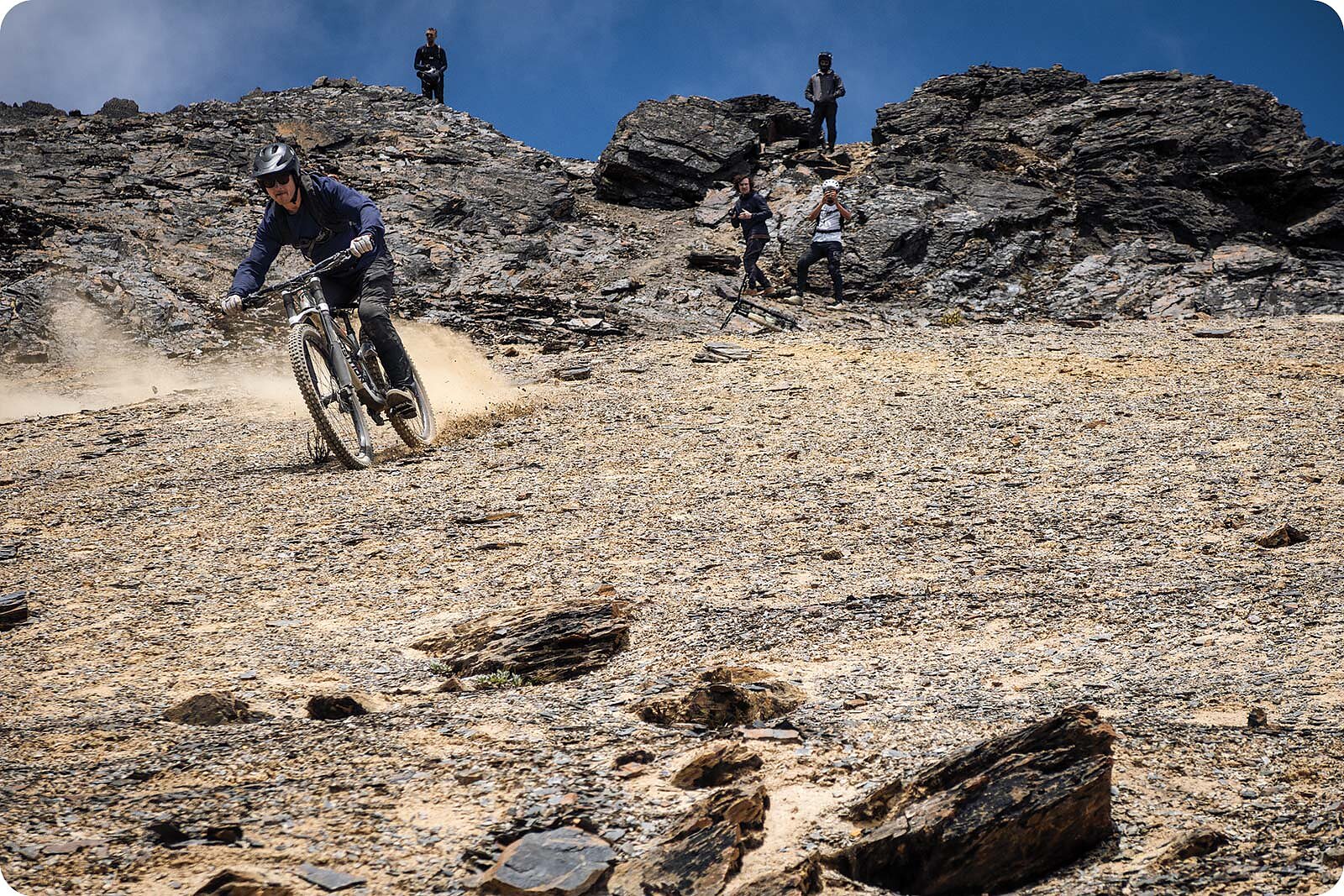
AS THE SCREE HAD CRUMBLED BENEATH OUR TIRES, SO DID THE WALLS THAT GUARDED OUR SECRETS.
Echoes of laughter chased us through the valley and across llama paths that led back to our trucks. As we returned, any hint of attitude or ego dissolved into the Bolivian scree, replaced instead with tears of joy.
“It’s the scree cuddle puddle—Matt’s turned the waterworks on,” Leif said as our crew huddled around Matt, tears streaming down our faces. Leif may have been our spiritual leader, but Matt was our emotional one. His ability to open up while feeling comfortable with everyone was the gateway for us all to trust each other and create a stronger connection to the landscape around us as it slowly taught us more about ourselves.
During a lunch break at the dimly lit Huayna Potosi climber base camp, Leif, his sweet tooth evident, reached for his second dessert. As we relaxed, Hannah, the lone Spanish speaker of our gringo group and an impressive rider, sat in contemplation, absorbing all that had transpired up until that point.
“What’s your biggest weakness?” Hannah asked the group, curiosity brimming. Although Yannick had been prompting such questions since the start of the journey, Hannah’s inquisitiveness was what truly broke the ice and garnered meaningful responses.
“I’m a bit stubborn,” Leif said. “It’s something I am working on, but when I feel opinionated about something, I stand my ground.”
As the scree had crumbled beneath our tires, so did the walls that guarded our secrets. We went around the room stating weaknesses. Some of our cheeks glistened with tears.
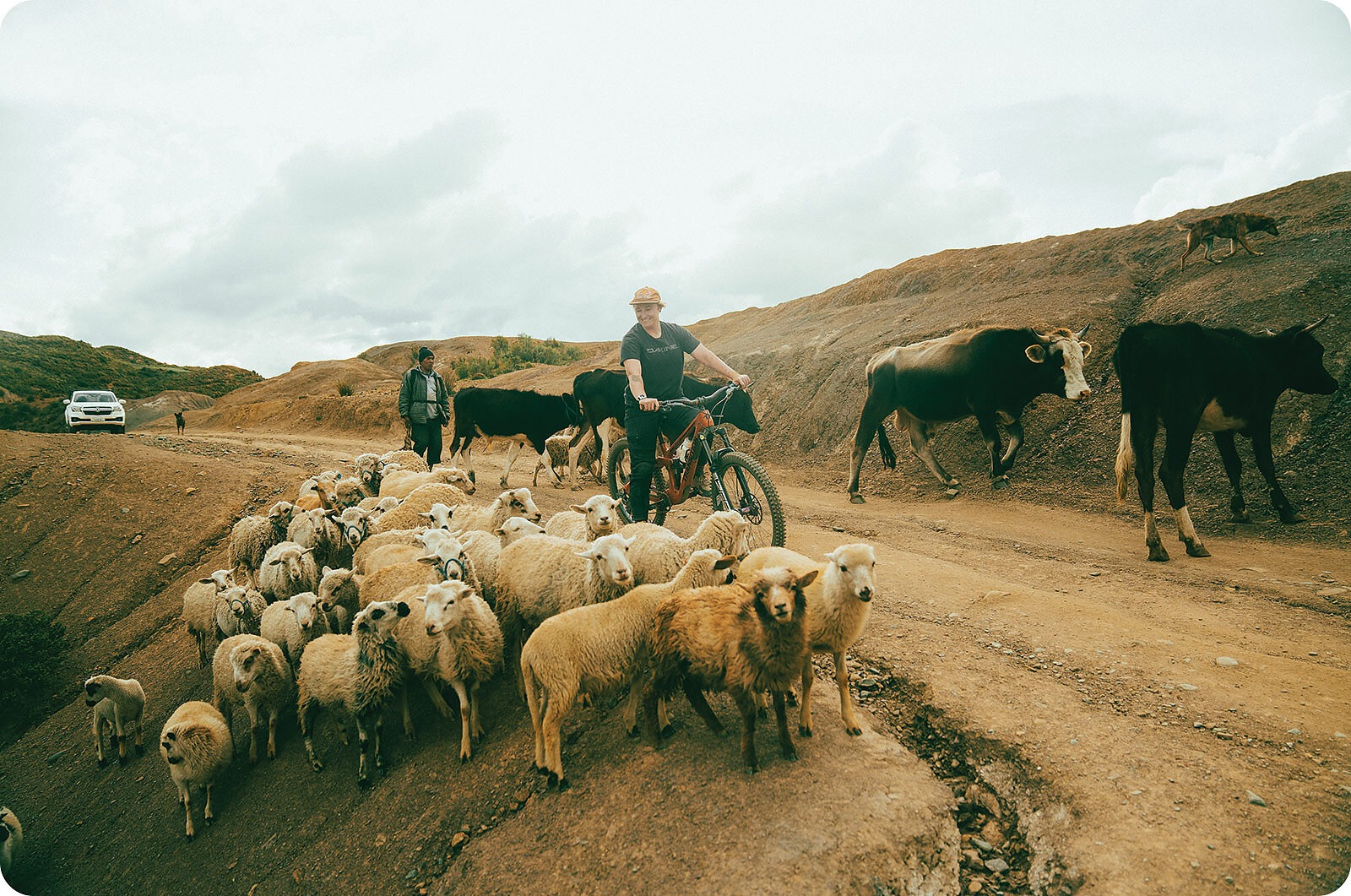
The following day, after a late start and a two hour shuttle to the top of Chuchu pass, we unloaded our bikes at an expansive cirque lingering in the clouds. Yannick directed us to the trail, but Leif stared in the opposite direction at an untouched panel of unridden scree. With his heels dug into the fragile soil, our plan to go downhill pivoted to an hour-long slog to an untouched peak.
“We just have to keep following llama highway,” Leif said repeatedly through labored breath as we pushed to the top. After wrapping around the highway on the 16,000-foot cirque, he laid down his bike and scrambled to help carry bikes until everyone could take in the views and experience standing on a peak that mountain bike tires had never graced. Then, as we’d done so many times during the week, we dropped in together and surfed.
Our trip ended less gloriously. Back at home, some in our group started to feel seriously ill. Two of us ended up in the hospital, cooped up for days with a typhoid fever diagnosis. As my IV bag dripped, I had nothing but time to reflect on riding in Bolivia. Not only had its natural beauty encouraged us to tap into our true selves, but it also challenged us in ways we’d never thought we could comprehend. My experience in Bolivia changed how I get along with my friends.
Society teaches us to put on a tough persona to be prosperous, but maybe it’s the other way around. Perhaps the most prosperous people are the ones that can dig into their emotions and relate to situations outside their own, which connect them more deeply to themselves and the world. High altitude scree fields, it turns out, make for wise teachers.
